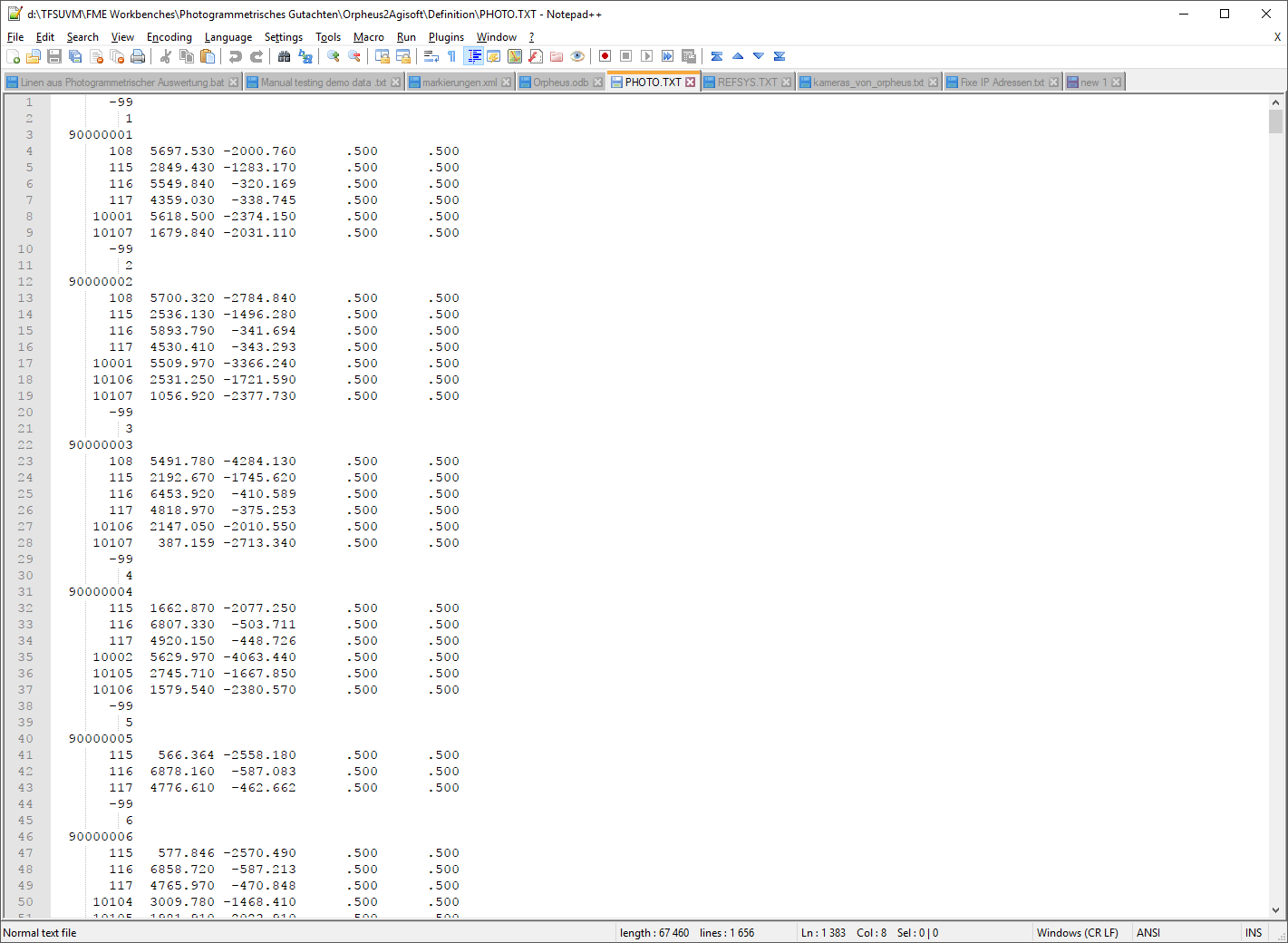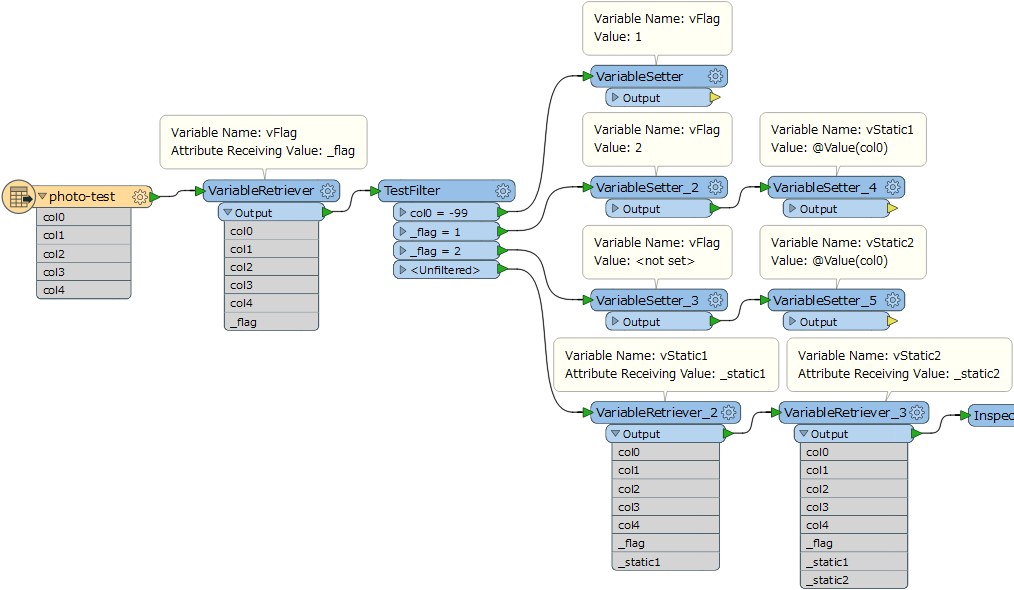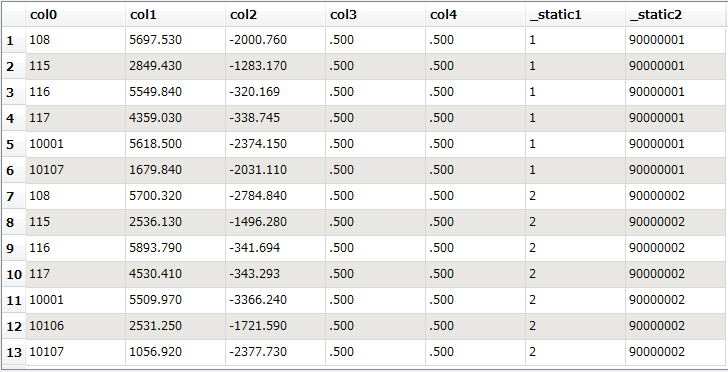Hi,
I'm facing some troubles to figure out how to transfer some attributes that are present on some text lines to subsequent text line features.
See below a screenshot of my data situation

Whenever -99 occurs a new dataset begins. The next two number are static values and then various measured records will occur. What I'm trying to achieve is, to pass on the two static values to every record ot the dataset. As soon as a new dataset (-99) begins the mechanism should reset and now use use the most recent values for inheriting.
Find attached my current workspace together with a small sample dataset.
Thanks for your help!










